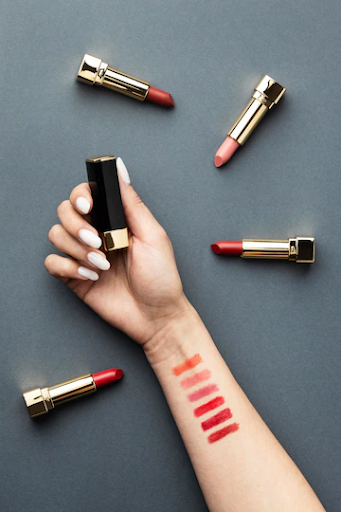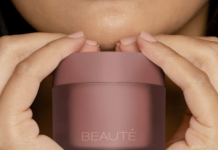Lipsticks are one of the most recognized cosmetic products in the world. Lipsticks are designed to both apply color and hydration to the lips. The origins of lipstick can be traced back to ancient times when ancient Sumerians used lipstick 5000 years before the industrialized world.
In the past, they were primarily made for aesthetic purposes and gave lips color, especially for women. But as technology and science progressed, lipsticks are now made with certain chemicals and ingredients that provide certain medical benefits to lips.
This article will tackle how lipsticks are made, the materials needed, and the types of lipsticks available on the market.
Table of Contents
What are lipsticks made of?
Lipsticks today are made with tons of different materials, but all of them are made with three essential ingredients, which are oil, wax, and coloring pigment. These are all crucial elements that allow lipsticks to do their jobs- give color to lips.
Nowadays, most ones are also integrated with emollients, which are components that give lipstick additional medical benefits such as sun protection and moisturizing properties.
Step by step process of lipstick production
Preparation of materials
Before starting the actual lipstick production, companies have to get the necessary ingredients.
The oil can be mineral, vegetable, or other types of oil, and the wax can be a combination of three different waxes: candelilla, beeswax, and carnauba. And lastly, the fragrance and pigment can be made with just one color or a variety of two or more colors.
Melting and mixing of the ingredients
After the materials are gathered and proportions are already calculated, it’s time to melt them down and mix them thoroughly.
First, the raw materials are melted separately in different stainless steel containers. Once all three ingredients achieve a liquid state, they are all added together in one large container to mix.

Contrary to the old way of creating lipstick, instead of using the old roller mill method, companies are now using new technology to make their lipsticks more consistent at a much faster rate by utilizing vacuum mixer homogenizers.
Vacuum mixer homogenizers allow for faster mixing of different ingredients through high-pressure seals. These machines allow for the speedier mixing of these offensive materials, but they also produce more uniform solutions than traditional methods of mixing.
Cooling and molding
Once the required consistency and uniformity are achieved, the lipstick solution is then put into vertical molds where they will be allowed to cool down; this process also allows the liquid to get rid of pockets trapped inside the solution.
Once the liquid is cooled to a specific temperature, workers or automated machinery will pour it into smaller tubes where they will be allowed to cool down again by transporting them into refrigeration units.
After this, the lipsticks will undergo quality checks to remove damaged lipsticks from the batch.
Labeling and Packaging
After everything is done, the lipsticks are ready to be shipped off to different sellers worldwide. The lipsticks are first labeled, packaged into bulk packs, and sent off to sellers.
Types
They undergo the same process, but their compositions vary depending on the different companies want to achieve; here are some lipstick types you might see on the market.
- Sheer– These lipsticks are among the most common types of lipstick on the market. These give your lips a dash of color and also moisturize your lips to keep them hydrated throughout the day.
- Matte– As the name suggests, these types of lipstick give your lips a matte finish. These are made with deep pigmentation that allows them to give off their signature intense color.
- Glossy– Glossy-type lipsticks give your lips a glass-like finish; these sticky and thick colors allow your lips to shine and also be hydrated all day long.
- Frosted/Metallic– These lipsticks were quite the hype back in the 90s; frosted allowed people’s lips to be plumper, fuller, and sparkle as glitters were incorporated into creating these lipsticks.
- Moisturizing lipstick– These lipsticks are used by most people living in a dry climate. Moisturizing lipsticks allow for great hydration of your lips which will help prevent your lips from developing cracks.
Conclusion
Lipsticks are indeed great cosmetic products not only for aesthetic purposes but also for good lip health.
The ever-growing development and innovation have also allowed the creation of lipsticks to be faster, more efficient, and more consistent over the years, especially with automated systems and massive machinery such as vacuum mixer homogenizers swapping out the traditional mixing of lipstick solutions.
Choose the correct type of lipstick that suits your style, and always check for lipsticks that have moisturizing ingredients that will allow you to look fabulous when going out and keep your lips healthy and hydrated.





